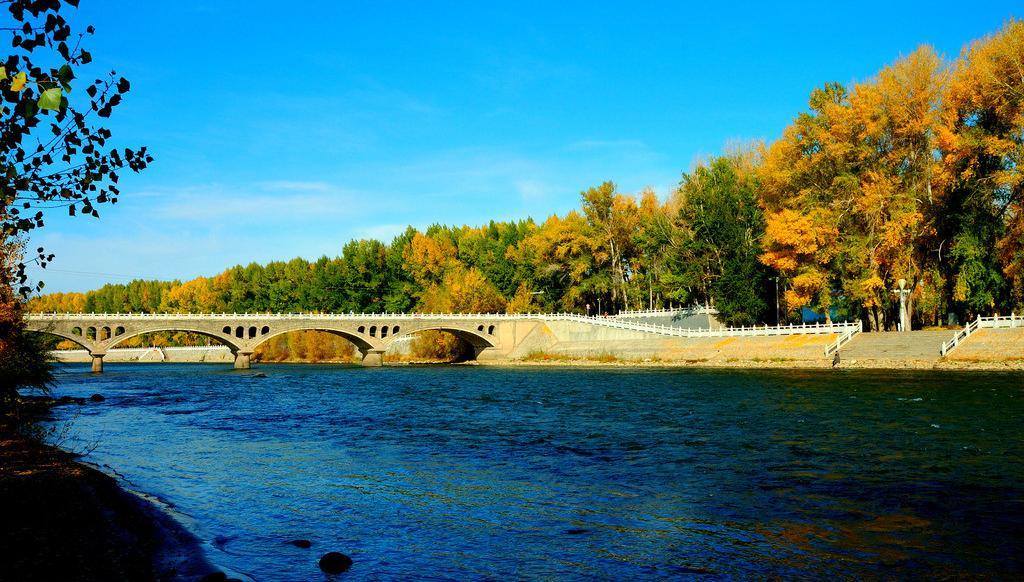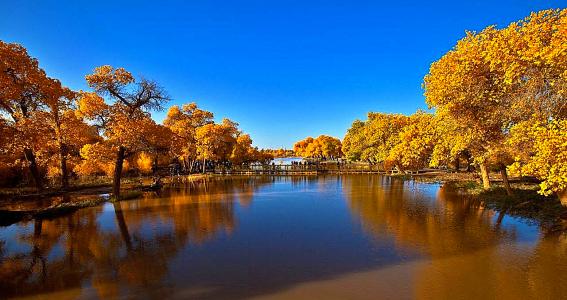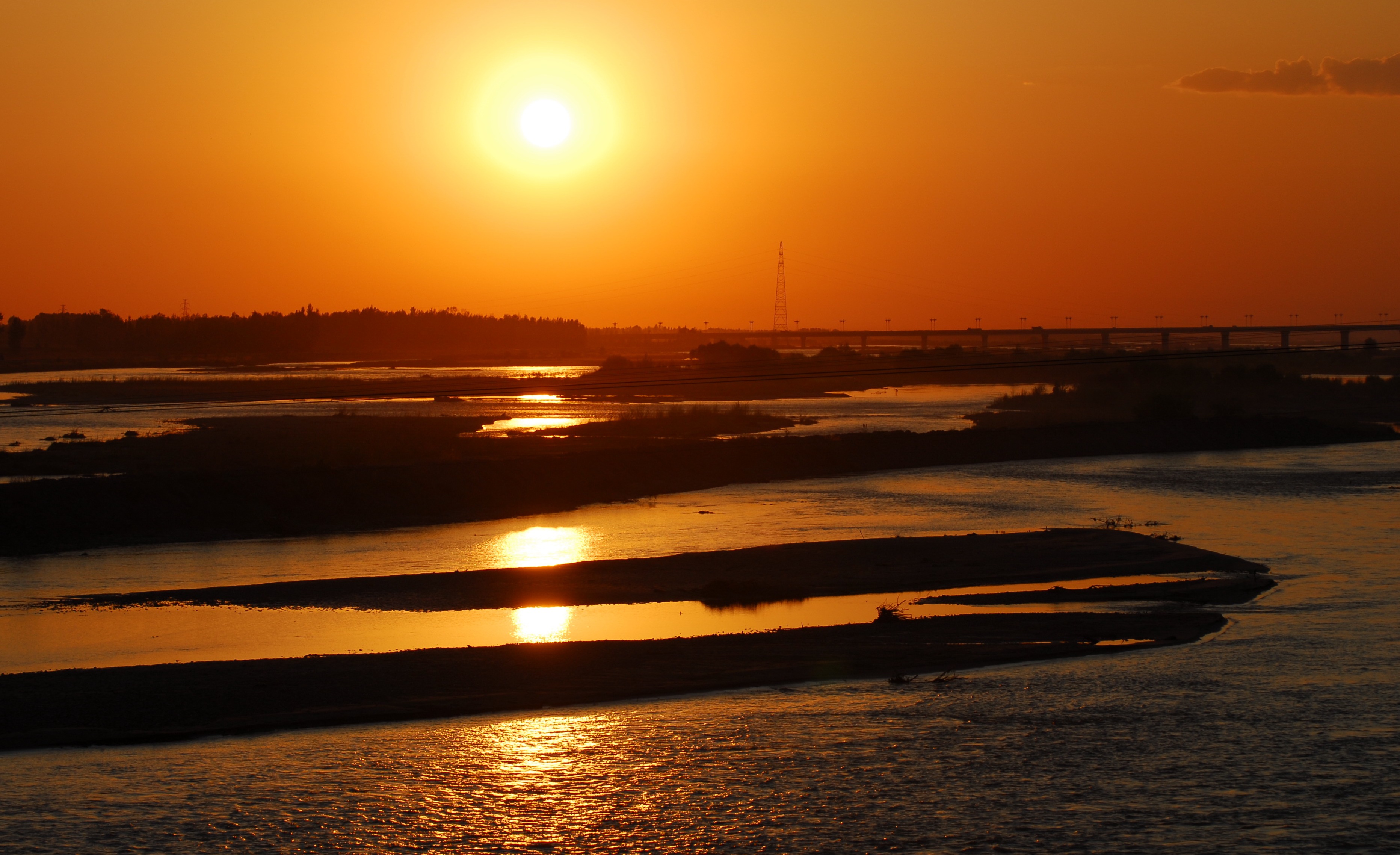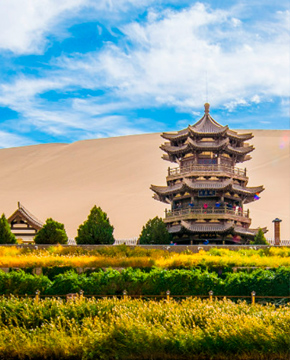
In the Ocean, water dominates all lives. In the river, water is immortal stars made by the splash of the waves. But in Xinjiang, water is a natural law, and it is the dimension to measure destiny. When there is water, there are lives; without water, deathly solitude will prevail there.
But the water neither shows its cruelty, nor shows off its sweet charm, and it always protects and manages nature as a real Queen Mother.
Many people think that Xinjiang is a barren land of extreme water shortage, which is in fact a widely spread misunderstanding. There are 570 rivers and more than 100 lakes in Xinjiang, with annual runoff surface water reaching 88,000 million cubic meters, the quantity of the groundwater also exceeds 20,000 million cubic meters, and the theoretical water resource storage here ranks fourth in China. Most of the Yili River and Ertix River flow into the foreign countries, that is to say, not all the water resources are channeled and used.
It may be hard for you to believe that Xinjiang has a history of shipping. In the 1950s, there was a shipping route hundreds of kilometers long along the Yili and Ertix River, and during that period, the to-and-fro steamers became one of the most important transportation for the cargo exchanges between China and Russia at the northwest place in China. At that time, the boats and ships were also familiar vehicles on the Tarim River and Peacock River.
Even the extremely droughty place, the Tarim Basin, may conceal many water secrets. Thinking about such a well closed-in basin, surrounded by the Tarim , Kaidu, Peacock, Weigan, Aksu, Yerqiang, Kaxgar, Hotan and Cheerchen rivers, most of the floating water seeps into the underground expect for that which evaporates. The seepage water will eventually find its home, and may not go too far. Long ago, in the past years, people thought the water hid underground, appearing in Qinghai province thousands of miles away, and the real headstream of the Yellow River. Now people know that this is an obvious mistake. But if one day you may hear reports from the media saying that a huge underground reservoir is found in the Tarim Basin, it is good news that is to come sooner or later.

In such a dry place, water is neither a princess in the palm, nor a funny woman in the village; as a place that is far from the ocean , the performance of water is so fascinating as to be out of your imagination. Seeing from the appearance, there are solid snow and ice, liquid water and dew, and also gaseous cloud and fog; seeing from the position, snow mountain , glacier, river, lake and groundwater are available everywhere; seeing from the alignment, the rivers flows to the east, west, north and south, in all directions; and seeing from the ending, there are numerous inland rivers, and also China's only outflow river that heads to the Arctic Ocean. The waters express their elegant appearance thoroughly, and their simpleness and freedom make people's plight an enviable one . Strangely, the precious and lovely waters do not cause madness and fighting. Wherever the waters go, the plants follow. Wherever the waters retreat, the plants will disappear. Water comes and goes on this earth, attracting numerous animals, plants and people, leaving numerous extinct living creatures and a lost civilization.
You'll find it hard to believe that even a desert can get along well with water. To people's surprise, the rivers and deserts in the Tarim Basin, with an area of 600,000 square kilometers, are interlaced, and live in the same geography environment. In the east of the basin, the Peacock River goes deep into the hinterland of the Kuruk Desert, while in the west of the basin the Hotan River walks goes across the desert from the south to north. The Cheerchen River walks through the south of the desert , and the mainstream of the Tarim River, with over 1,000 kilometers long, flows in the north brink of the Taklamankan Desert. Although the branches of the rivers occasionally stretch into the desert, feeding a field of diversiform - leaved Poplars, and sometimes filling in river channel, what is evident is their invariable belonging.
With a topography of “Three Mountains and Two Basins” as its background, the water is able to fully showcase its personality. It supplies lives with milk, and eternally comforts desolation. Animals, plants and mankind pursue the water, and they infinitely respect it. Gobi, desert, and wasteland accompany the water, although the water is near, it is hard to get. However they seems all the time with no regret. This kind of scene, which looks as international in arrangements as a play script, is just so fascinating and meaningful!




